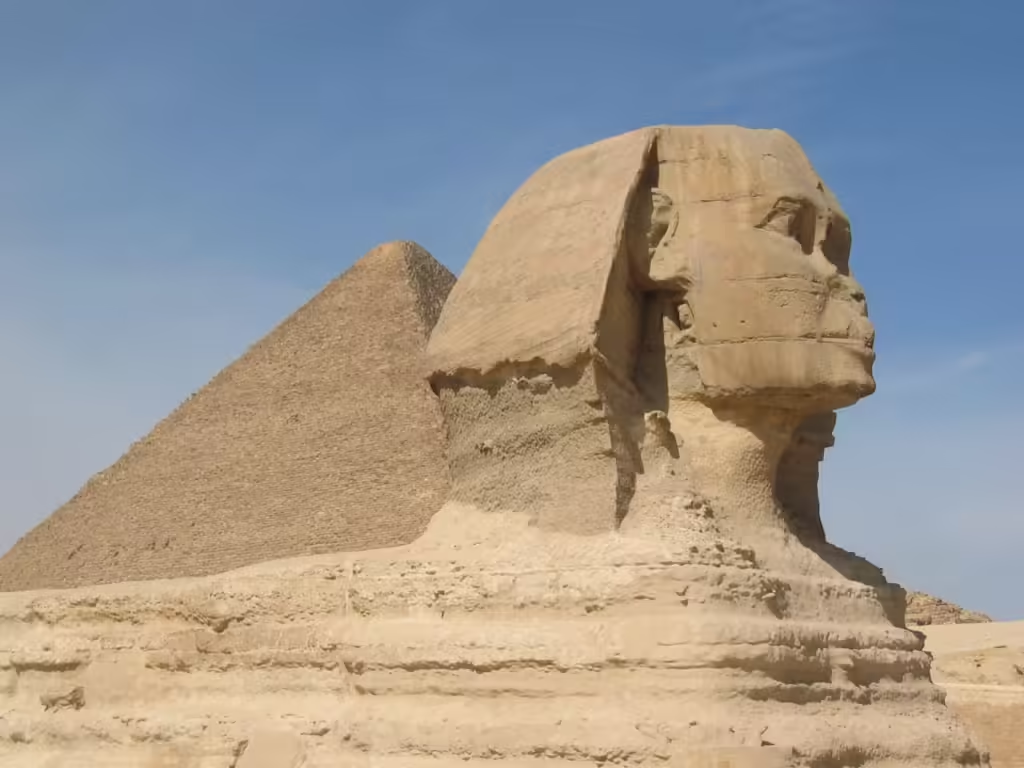In his 1954 booklet, The Philosophy of the Revolution, the Egyptian leader and political ideologue Gamal Abdel Nasser outlined his Three Circles Theory in which he placed Egypt at the coincidence of three geographical circles – Arab, African and Islamic. The theory lays down the foundation of the Egyptian role in the three circles and the world beyond. What was unleashed thereafter was a manifestation of Arab Nationalism, dormant since the Arab Revolt during the Great War, in the form of Pan-Arabism. Motivated by its strong anti-imperial stance, the phenomenon of Pan-Arabism soon gripped the Arab World. Several Arab countries began to follow in the footsteps of Egypt.

But Pan-Arabism was by no means the only feature of Nasserism. It also consisted of elements of Anti Monarchism, the Personality Cult of a single individual, Secularism, Socialism, the Free Officers Movement and Military Dictatorship to say the least. It was also a modern phenomenon, with most of the Nasserists being urban, educated and modernized civilians and military personnel.
The ripples of the Free Officers Coup in 1952 were felt in numerous Arab countries other than Egypt. The response in other Arab countries led to the Egyptian Leadership under Nasser exporting the Free Officers Movement and the Revolution. Some of them, such as Iraq, Syria, North Yemen and Libya.
were successful, while others such as Jordan, Saudi Arabia and Lebanon were unsuccessful. Their anti-monarchic stand had put them at odds with the existing Monarchies. For the Sultanates in the region, Nasserism was an existential threat. As a result, numerous declared and undeclared alliances appeared between the Monarchies. Perhaps the greatest threat to the Monarchies came in the form of the United Arab Republic. The repercussions were, among others, the desire of Nasserists to join the Union. The response of the monarchies was alliances between them. The Hashemite Arab Federation of Iraq and Jordan even appeared in response to the UAR. King Faisal was coerced by the situation to encourage Pan-Islamic Unity in response to Pan-Arab Unity. Perhaps the only country in the region that remained elusive for Nasserism was Iran, despite it having an Arab minority.
Leaders of certain countries, such as Muammar Ghaddafi of Libya, who saw the triumph of the movement went ahead to formulate their theory of the Third International and profess his book on the revolution, The Green Book. Some of them– Ghaddafi and Saddam Hussein –went ahead to become synonyms for tyrants. Some countries– Syria and Lebanon – found themselves in civil wars. Egypt meanwhile has remained stable throughout, except for a brief period.
Beyond the region, the strong enthusiasm for anti-colonialism the ideology harnessed from its adherents troubled the European Powers such as France and Great Britain. The support Nasser gave to resistance movements in Algeria and his export of the Free Officers Movement to Jordan annoyed both of them.
Nasserism was ill-fated to decline within almost ten years– after the Egyptian debacle in the 1967 Six-Day War– after its peak accompanying the 1956 Suez Crisis. The political impact of the ideology was far-reaching. This paper deals with the immediate political impacts of Nasser and Nasserism in the region.
Background of Nasserism
In 1936, the Wafd government of Egypt opened the military academy for all sections of the society. The first cadet admitted to the academy consisted of the nine core Free Officers who later conducted the coup. The Free Officers Coup was the culmination of the nationalist agitation that had continued for seventy years since the Urabi Revolt in 1882. The leader of the coup was General Gamal Abdel Nasser. Throughout his initial years, Nasser was swept up in Egypt’s nationalist fervour, having been drawn to Mustafa Kamil’s nationalism.
At this point, Nasser developed an antagonistic attitude towards the imperialist forces– particularly Britain and France. The Anglo-Egyptian treaty of 1936 was a particular marker for Nasser who saw in it further subjugation of Egypt to Britain’s financial interests. The Free Officers’ involvement was motivated not by ideology or any grand scheme, but by indignation, embarrassment, and fear of arrest, which led them to deploy tanks & troops on the roads in the early hours of 23rd July.
After the 1956 Suez Crisis and the subsequent expulsion of British Troops from the Suez Canal region, the popularity of Nasser skyrocketed. Nasser’s rhetoric against imperialism now had a practical exemplification. With the inception of the campaign against the CENTO or Baghdad Pact and leading the anti-imperialist bloc in the Bandung Conference, up to the nationalization of the Company handling the Suez Canal through the purchase of its shares and the subsequent Suez War imposed by Britain, France and Israel, Nasser emerged as a hero. At this point, there was less embracement of the Pan-Arab idea than opposition to imperialism. The image of Egypt was reconstructed as an indivisible part of the Arab world.
But, as many scholars have commented on the phenomenon, Nasserism lacked a coherent ideology. The reason that the overthrow of King Farouk took place had less ideological reasons; it was just one of many forces that were opposed to the monarchy- the most powerful among them being the Muslim Brotherhood. The coup was motivated by the emotions of young officers with vague ideologies that were against the numerous abuses and corruption of the regime. Lacking a core ideology, the reliance upon a charismatic leader was imperative. Other characteristics of Nasserism included Egyptocentrism, Pan-Arabism, domestic Socialism, Imperialism and dictatorship
To begin with, Egyptocentrism was dominant in the initial times of the RCC rule just after the coup took place. It lasted from 1952-54. It was a period of internal consolidation of power. The consolidation required the elimination of old power structures including Imperialism, feudalism and capitalism. The establishment of a sound social justice system, the strengthening of the army and the establishment of a republic were focused on during the phase. However, the phase lacked the elements required to export the revolution for the RCC was embroiled in the internal struggle to maintain their power.
However, it was changed with the advent of the 1956 Suez War. Earlier, in 1954, Nasser was successful in driving out the British from Egypt minus the narrow part of the Suez Canal. The British troops stayed for the security of the Suez Canal Company. Then the conspiracy to unleash an invasion of Egypt led to the war in which Israel was the perpetrator. Israel’s first Prime Minister Ben Gurion had initially welcomed the new Egyptian government in 1952 but soon turned against it after sensing the element of Anti- Zionism in the RCC. The subsequent loss of Britain, France and Israel in the war catapulted Nasser into the international limelight. The boost that Nasser got to his image resulted in his latter traits.

The Proliferation of Nasserism
In 1955 the Baghdad Pact was launched by the West to counter Soviet expansionism and respond to the socialist revolutions in the Middle East. Nasser called it a ‘foreign pact’ that was meant to draw the Arabs into the ongoing cold war, accusing the Iraqi Government led by Said Al Nuri of being traitors of Arabs and a stooge of the imperialists. He claimed that all Arab states conformed with Egypt’s position on the pact of military alliance. The same year, in Bandung, Indonesia he gave his political standing a name- ‘positive neutrality’, which as per Nasser reflected the Arab People’s feelings. Still, at this point, the stance of Nasser was not anti-Marchical but merely against those monarchies supportive of the US. In such circumstances, Nasser found allies in Saudi Arabia and North Yemen.
Nasser’s prudence in selecting allies did not stop with the royalists. In Iraq, Jordan, and Syria pro-Nasser groups (who were influenced by Nasserism) often joined forces with the Ba’ath socialists and communists to oppose pro-Western regimes and leaders, either covertly or openly. The 1955 Soviet-Egyptian arms deal, followed by the Suez crisis of 1956, popularised a policy of anti-Western neutrality among a broad spectrum of Arab public opinion. Nasser’s reputation as the leading proponent of the Unity of the Arabs and anti-imperialism had soared by the dawn of 1956. Nasser’s portraits were hung in Amman’s barbershops, Damascus’s coffee shops, Jedewdah grocery stores, and Libyan Tripoli suqs. The Arab Voice of Cairo was widely broadcast in the Arab world. Parallel to this, Egypt’s military attachés in the capitals of Arabian countries were hard at work establishing strongholds in the forces of the states to which they had been admitted.
Arab unity, and by extension Nasserism, culminated in the form of the United Arab Republic in 1958. A political union between Egypt and Syria, it came into existence after a plebiscite in early 1958 in both countries that voted 99 per cent in favour. The union was, in fact, a quasi-federation, with Nasser as the President and Syrian Shukri al Quwwatli as the Vice President. The union was quite popular in both the countries and their respective ruling political parties. The Syrian Ba’ath Party has advocated for Pan-Arab unity since its foundation. Damascus was feared to be taken over by the communists during the Syrian Crisis of 1957. The situation compelled the Ba’athists of Syria to agree to a subordinate position in the union for themselves. Since Cairo was made the capital among others, Syria was made a subjugated province.
Ironically, Nasser was at first hesitant to participate in this endeavour, and when he eventually caved to pressure from Syria, he imposed his harsh terms. Syria’s separation from the United Arab Republic was the first major crisis in regional Arab politics, owing in large part to his rule of Syria as a subjugated province instead of an equal partner. Nothing demonstrated the disparity between Egypt’s restricted resources and Nasser’s far-reaching aspirations more than his refusal to intervene militarily in Syria to suppress the secessionist uprising, owing to a lack of territorial contingency. The Syrian secession which took place in 1961 after a coup in Damascus made the idea of Arab Unity again a distant dream.
Immediately after the declaration of the establishment of the Egypto-Syrian Union, the Muttawakilite Kingdom of Yemen expressed its intention to join the Union. The result was a confederation called the United Arab States, created within a month of the creation of the UAR. North Yemen, as it was also known, was an Imamate with Imam Ahmad bin Yahya at its helm. The reason why the imam chose to join the Union so fervently against the monarchies has its theories including his desire to ally with the powerful. However, that later proved to be futile in 1962 when the Pro Nasser forces in North Yemen under the leadership of Abdullah As-Salal led a coup against the newly crowned Imam Muhammad al-Badr.

The country was declared a republic and was supported by Nasser who had sent Egyptian forces and supplies. An estimated twenty thousand Egyptian troops were stationed in North Yemen. In the ensuing Civil War that lasted from 1962 to 1970, the region witnessed a Middle Eastern front of the Cold War polarizing the region. The Soviet Union came to support Nasser and the Yemeni Republicans and the United States and the Monarchies such as Saudis and Hashemites of Jordan- who had a long history of enmity- came forward to help the Imam. The Imam was later given refuge by Saudi Arabia.
The post-Suez war rise of Nasser had alerted the monarchies as early as 1957. History has it that the great enemies of the Hanbali Najdis of Central Arabia have been the residents of the cosmopolitan area of Hejaz and followers of the Shafi’i code of Jurisprudence. The former region serves the Capital of the Saudi Monarchy and the latter region had traditionally been the abode of the Hashemites. Immediately after the Great War, the two dynasties were embroiled in a struggle for control of the Hejaz.
The Saudis had captured Hejaz and expelled its Hashemite King to Jordan and Iraq. Both Jordan and Iraq were ruled by Kings of the same Hashemite dynasty. However, the Nasserism phenomenon compelled them to unite against the common threat. During the first Saudi King’s visit to Baghdad in 1957, both kings began to see the prospectus of a counterforce against General Nasser.
In 1958, just within days after the establishment of the UAR, the two Hashemite kingdoms proclaimed the United Arab Federation- that was in reality a confederation- to counter the growing clout of Nasserism in the Military personnel. The federation was a response to the UAR in more than one way. First, it forged a military alliance between the two Hashemite kingdoms. Second, since the proclamation of UAR, the original proponents of Pan-Arab Unity- the Hashemites- were now posed with the same problem. Hence the two countries tried to revive the Pan-Arab aspirations minus the Nasserist Anti Monarchism and anti-Western sentiment. However, in July 1958, Iraq became the first Arab country other than Egypt to experience its own Free Officers Coup.
The 14 July Revolution deposed and killed Hashemite King Faisal II along with Crown Prince Abdallah, Prime Minister Nuri al-Said and the visiting Jordanian Prime Minister. The coup was led by Abd al-Karim Qasim and Abd al-Salam Arif. Arif was a staunch Nasserist, who was for a union with Egypt. But Qasim had put an end to the prospectus of an Egypto-Iraqi union by seizing the power in Baghdad. The political reasons for the coup included the free officer’s opposition to the Baghdad Pact and the British control over the Iraqi Petroleum Company among others. Even the Federation was seen as an alliance of the stooges of the West.
The Saudi kingdom was also unable to remain aloof from the wave of Nasserism. During the reign of King Saud, Nasser had offered to train some Saudi troops in Egypt. As the king later found out, the soldiers were indoctrinated in Egypt and later attempted a coup in 1955 under the leadership of a Saudi soldier Abd al-Rahman al-Shamrawi along with his twelve comrades. Even the Saudi Arabian royal family came under the influence of Nasserism.
The Free Princes or Al Umara’ al Ahrar was a royal opposition group formed by half-brothers of King Saud and Crown Prince Faisal, Prince Talal bin Abdul Aziz al Saud. He began his demands in 1958 for a National Council, a consultative Assembly rather than a legislative one. His larger aim was to make Saudi Arabia a constitutional monarchy, viewing the establishment of such an assembly as the first step. The members of the group were called the Young Najd. When Talal was convinced that his demands fell on deaf ears, he announced his group after moving to Cairo and Beirut. The opposition to the monarchy was clothed with the ongoing trends in the Arab World- Arab Nationalism, secularism, socialism etc., and was a great deal influenced by Nasser. Accompanying Talal in the mission were his full brothers. However, the discourse of the Free Princes couldn’t entice the royalty and the commoners.
The Civil War in Yemen (1962 – 1970) was another major problem for the Saudi Monarchy. The Egyptian troops were stationed at a point that, first, had a majority Shia Population, and secondly, had been at odds with the Saudis for decades. The Saudis had fought the Imam during their expansion in the Arabian Peninsula but stopped short at the border due to geographical reasons. Also, troops stationed at higher altitudes in Yemen had an advantage over the mostly barren and flat Saudi Arabia. Moreover, a revolution in the Shia-dominated region of the peninsula could ignite the Shias of Saudi Arabia, especially those residing in the oil-rich region of Al Diriyah.
The neighbouring country of Libya, where the Sanussids were in power, was the last country to be impacted by Nasserism decisively. King Idris had become unpopular due to the concentration of the Libyan oil wealth in his hands. The coup deposing him took place in September 1969 and was led by charismatic colonel Muammar Ghaddafi. Ghaddafi later went ahead to formulate his theory on the Third International. He ruled mostly according to Nasserist principles, mending Sharia in a way to incorporate Islamic Social Justice, gave the concept of Jamhariya and wrote the Green Book highlighting his views. In tandem with the Nasserist tradition, he was also staunchly anti-imperialist.
Conclusion
Gamal Abdel Nasser died in 1970. With him died the wave which had already gripped the Arab world. The wave had weakened after the disaster on the Arab side of the 1967 Arab-Israeli War. But his legacy still haunts the region. His critics point out his failure to incorporate democracy in the region or Egypt resulting in the widespread Arab Spring of 2010-11. Proponents of the ideology highlight the contemporary importance of Nasser. But the fact remains that Nasserism had initiated the Middle East to be a haven for dictators. Moreover, after abandoning socialism, the unpopularity of Nasser’s successors or leaders impacted by Nasserism made the legacy of Nasser further controversial.




